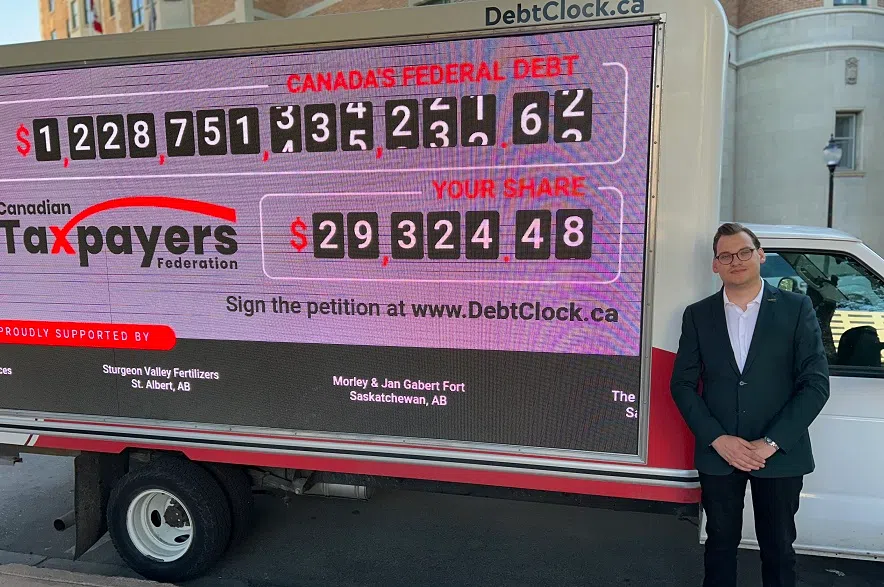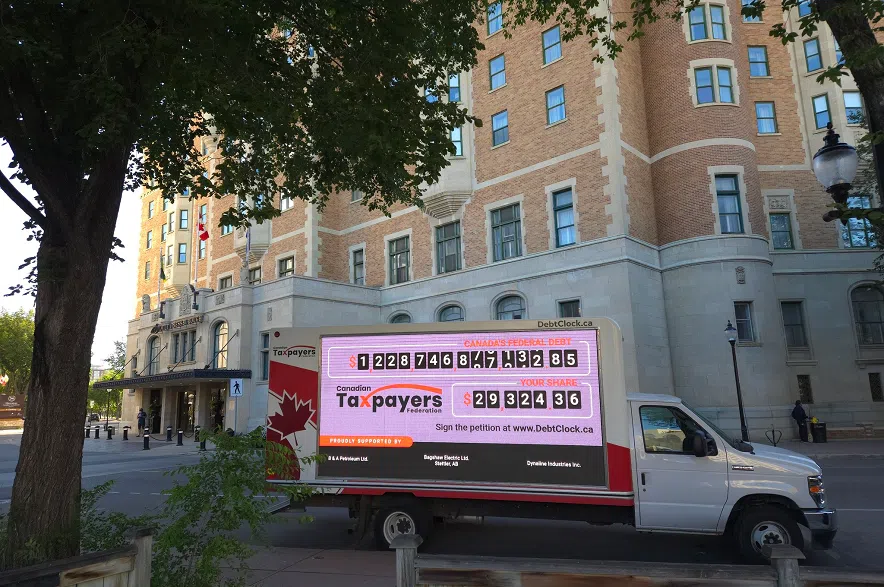The Canadian Taxpayers Federation (CTF) sounded the alarm to people in downtown Saskatoon about just how bad the federal government’s debt is by rolling in it’s debt clock.
The number on Wednesday read over $1 trillion and is continuing to climb according to CTF prairie director Gage Haubrich.
“Every single day the federal government increases the debt by $100 million. It’s going to be more than $1.25 trillion by the end of the year and that means every single Canadian is going to owe more than $29,000 in their share of the debt,” he explained. “The problem with that is with more debt comes more interest payments.”
According to Haubrich, the federal government plans to spend $54 billion on those interest payments — the same amount of money the federal government intends to collect in GST this year.
Haubrich calls this concerning for taxpayers.
“It’s a big problem for us as taxpayers. What happens when the government runs out of money to spend on things? They look to us to pay more in taxes, but in reality the government (would) have $54 billion more to spend this year if it had been cautious and balanced the budget in the past,” he added.
Haubrich said since 2016, the Justin Trudeau led Liberal government has more than doubled the federal debt.
He added the government needs to start looking at ways to cut costs.
The federal government might be the one in the crosshairs of the Taxpayers Federation, but Haubrich said they also look at how provinces are handling their debt as well.
He mentioned Saskatchewan needs to do a better job at getting their debt under control.
“Unfortunately, all across the country there’s governments running up huge debts and deficits. We’re seeing Saskatchewan’s government do the same with their deficit this year — increasing the debt to the highest it’s ever been,” he said. “It’s unfortunate that Scott Moe is kind of looking like his federal counterpart in Ottawa and continues to hike up the debt instead of finding those savings.”
Across Canada, Haubrich said very few provinces are taking action to address their debt limit, but he said there are some standouts who are working to take the burden off taxpayers.
“There’s two provinces that are kind of doing alright lately. The best is New Brunswick — they’ve had a string of balanced budgets and (are) slowly decreasing their debt,” he said. “Alberta is also sometimes a star — it’s good to compare that to us here in Saskatchewan — they’ve also had a string of balanced budgets and been able to pay down some debt as well.”












